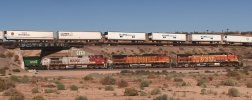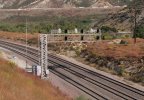blueberry11
Member
I am looking for countries where rail traffic runs on a different side to road traffic.
I think it mostly matches but there are anomalies. For example, France, Switzerland and Sweden all drive cars on the right, but they (mostly) run railways on the left. I know that road and rail traffic are kept separate, but is it the equivalent to driving from France to the UK where you have to adjust to having things on the wrong side?
With metro systems, it varies. The Paris Metro runs on the right, but not the RER (roughly equivalent to Germany's S-bahn or UK's Crossrail) I suppose. Trams also normally match sides with road traffic since they may share the road with cars.
Plus, what would happen if the trains cross from Belgium (which runs on the left) to the Netherlands (right)? Does that mean making a grade separated junction or just signals switching sides?
I think it mostly matches but there are anomalies. For example, France, Switzerland and Sweden all drive cars on the right, but they (mostly) run railways on the left. I know that road and rail traffic are kept separate, but is it the equivalent to driving from France to the UK where you have to adjust to having things on the wrong side?
With metro systems, it varies. The Paris Metro runs on the right, but not the RER (roughly equivalent to Germany's S-bahn or UK's Crossrail) I suppose. Trams also normally match sides with road traffic since they may share the road with cars.
Plus, what would happen if the trains cross from Belgium (which runs on the left) to the Netherlands (right)? Does that mean making a grade separated junction or just signals switching sides?



